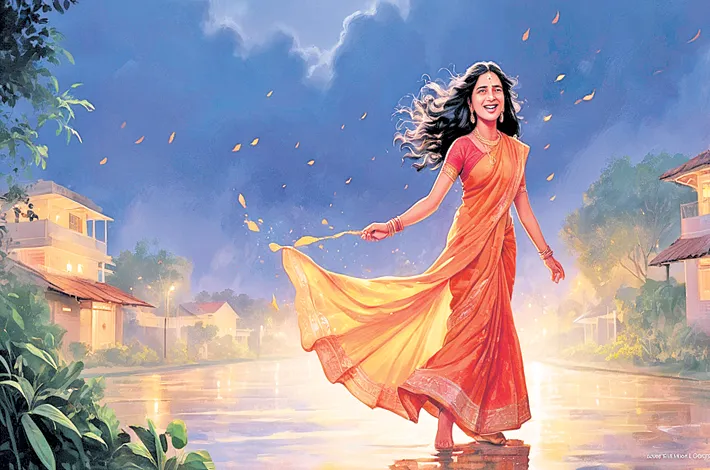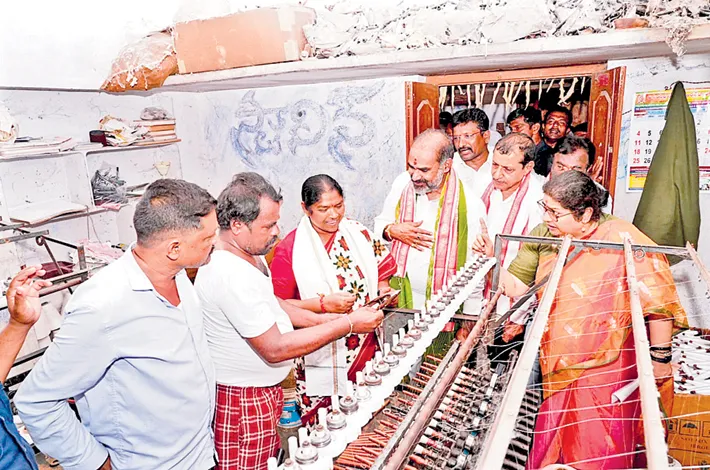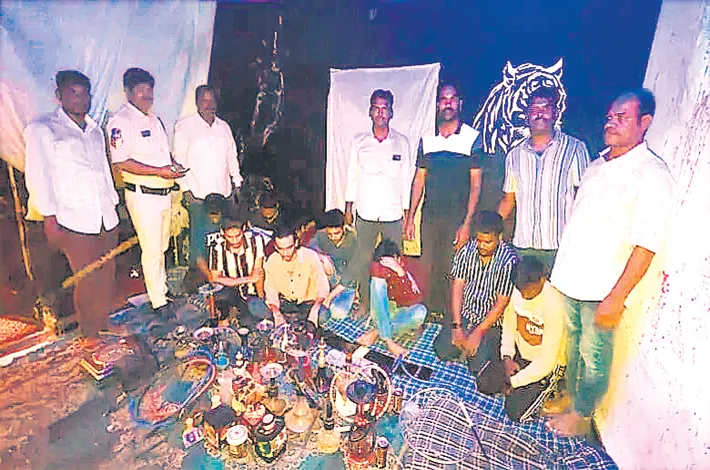Tere Ghar Ke Samne: A Love Beyond Walls
06-05-2025 12:00:00 AM

In the bustling heart of 1960s Delhi, where cycle rickshaws jostled with Ambassador cars, stood two grand havelis facing each other on a tree-lined street. The Sharma Haveli, with its intricate jharokhas, radiated old-world charm, while the Gupta Haveli, modern and sleek, boasted glass windows that gleamed under the sun. The families within, however, were locked in a feud as old as the street itself—a dispute over a sliver of land between their homes, now a contested garden where marigolds bloomed amid bitter arguments.
Rakesh Sharma, the dashing young architect son of the Sharma clan, had just returned from London, his head brimming with dreams of building a new India. With his sharp jawline, neatly combed hair, and a penchant for humming old Hindi film songs, he was the talk of the neighborhood. Across the street lived Seema Gupta, the spirited daughter of the Guptas, whose laughter could light up the gloomiest evenings. Her love for painting and her fiery spirit made her both enchanting and untamed, like the monsoon winds.
Their first meeting was anything but romantic. Rakesh, sketching designs for a community center, stood in the disputed garden when Seema stormed out, paintbrush in hand, accusing him of trespassing. “This is Gupta land!” she declared, her eyes blazing. Rakesh, unfazed, flashed a mischievous grin. “The marigolds don’t seem to care whose land it is. Why should we?” Seema huffed, but something about his easy charm lingered in her mind.
Days turned into weeks, and their clashes became a routine. Rakesh would “accidentally” wander into the garden, sketching, while Seema would arrive to paint the flowers, each pretending to ignore the other. Yet, their banter grew playful. He’d tease her about her lopsided strokes; she’d mock his obsession with straight lines. One evening, as the sun dipped below the horizon, casting a golden glow over the garden, Rakesh offered her a pencil. “Try sketching for a change,” he said. Seema, rolling her eyes, took it, their fingers brushing. The air stilled, and for a moment, the feud felt like a distant memory.
Their secret meetings in the garden blossomed into something deeper. Rakesh would leave sketches of imaginary houses on the garden bench, each with a tiny note: “For the girl who paints my world.” Seema, in turn, left vibrant paintings of sunsets, with scribbled replies: “For the boy who builds my dreams.” They spoke of everything—his vision for a city where old and new coexisted, her dream of an art school for children. But the weight of their families’ rivalry loomed large.
One rainy afternoon, as they sheltered under a neem tree, Rakesh confessed, “Seema, I don’t care about this land. I care about you.” Her heart raced, but fear crept in. “Our families will never agree, Rakesh. This isn’t one of your blueprints.” He took her hand, his eyes steady. “Then we’ll draw a new plan—together.”
Their love, however, couldn’t stay hidden. Seema’s brother, Anil, caught them laughing in the garden and informed the Guptas. The Sharmas, too, learned of Rakesh’s “betrayal.” The families forbade them from meeting, and the garden, once their sanctuary, became a battleground again. Rakesh’s father, a stern patriarch, declared, “No Sharma will ever bow to a Gupta!” Seema’s mother echoed, “Our pride is not for sale!”
DesI refused to give up. Rakesh and Seema, heartbroken but resolute, devised a plan. Rakesh, using his architectural skills, proposed a solution to end the feud: a shared community center on the disputed land, a place for both families to coexist. He drafted blueprints, envisioning a space with art studios for Seema’s dream school and modern amenities for the neighborhood. Seema, meanwhile, painted a mural on a canvas, depicting the two havelis united by a bridge of marigolds—a symbol of harmony.
Presenting their idea was no easy task. At a tense neighborhood meeting, Rakesh stood before both families, his voice steady. “This land isn’t just ours—it belongs to our children, our future. Let’s build something that unites us.” Seema unveiled her mural, its colors vibrant and hopeful. The room fell silent. Slowly, the elders softened. Seema’s father, moved by her passion, admitted, “Perhaps we’ve been fighting for too long.” Rakesh’s mother, tears in her eyes, nodded. “For our children’s happiness, we can try.”
The community center rose, brick by brick, with both families contributing. The garden remained, now a shared space where marigolds thrived. Rakesh and Seema, once star-crossed, stood hand in hand at the center’s opening, their love no longer a secret but a bridge between two worlds. As they cut the ribbon, the crowd cheered, and somewhere, a radio played an old song: Tere ghar ke samne, ek ghar banaunga… Their love had not only won but had built a legacy—one of unity, dreams, and marigolds that bloomed for all.








